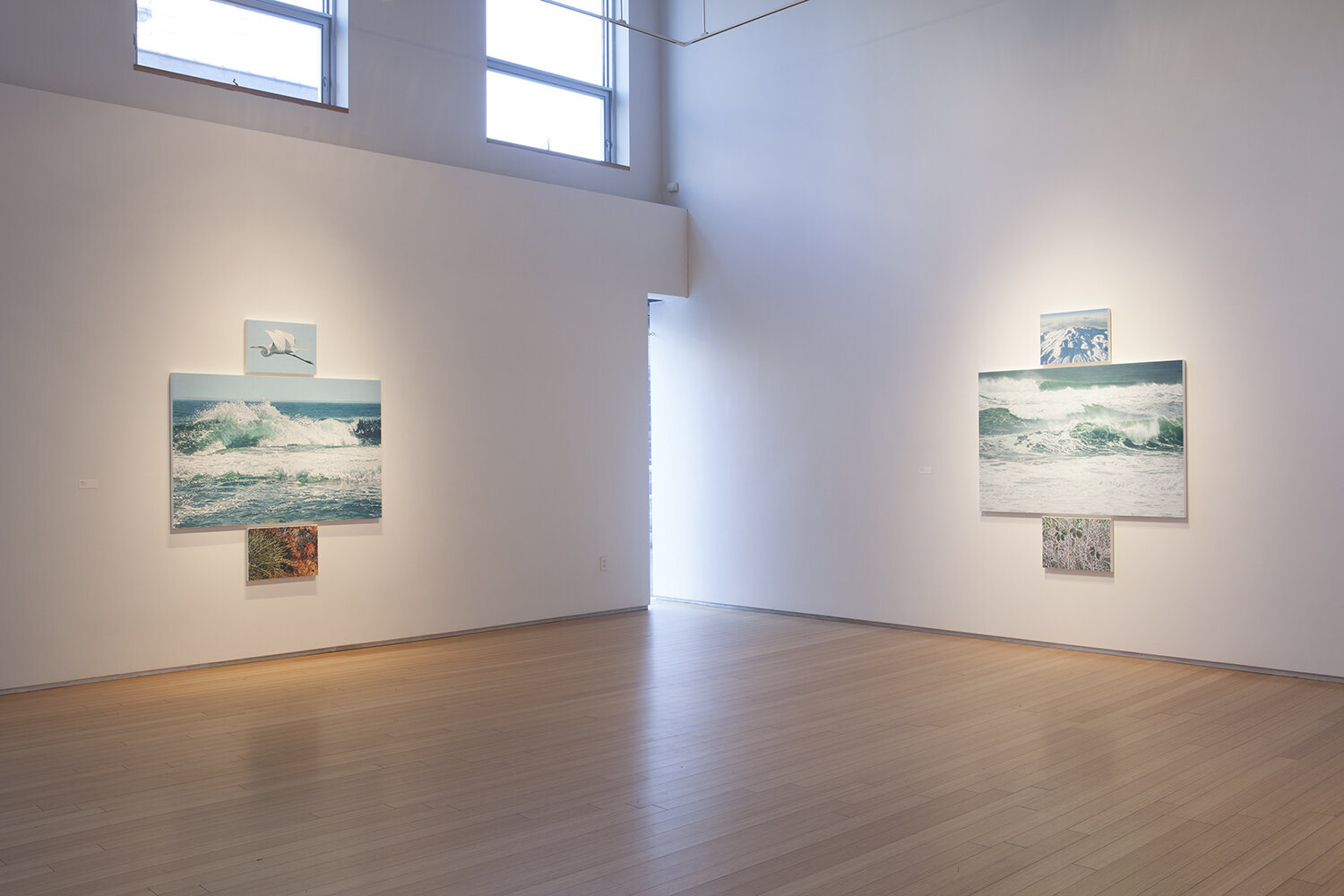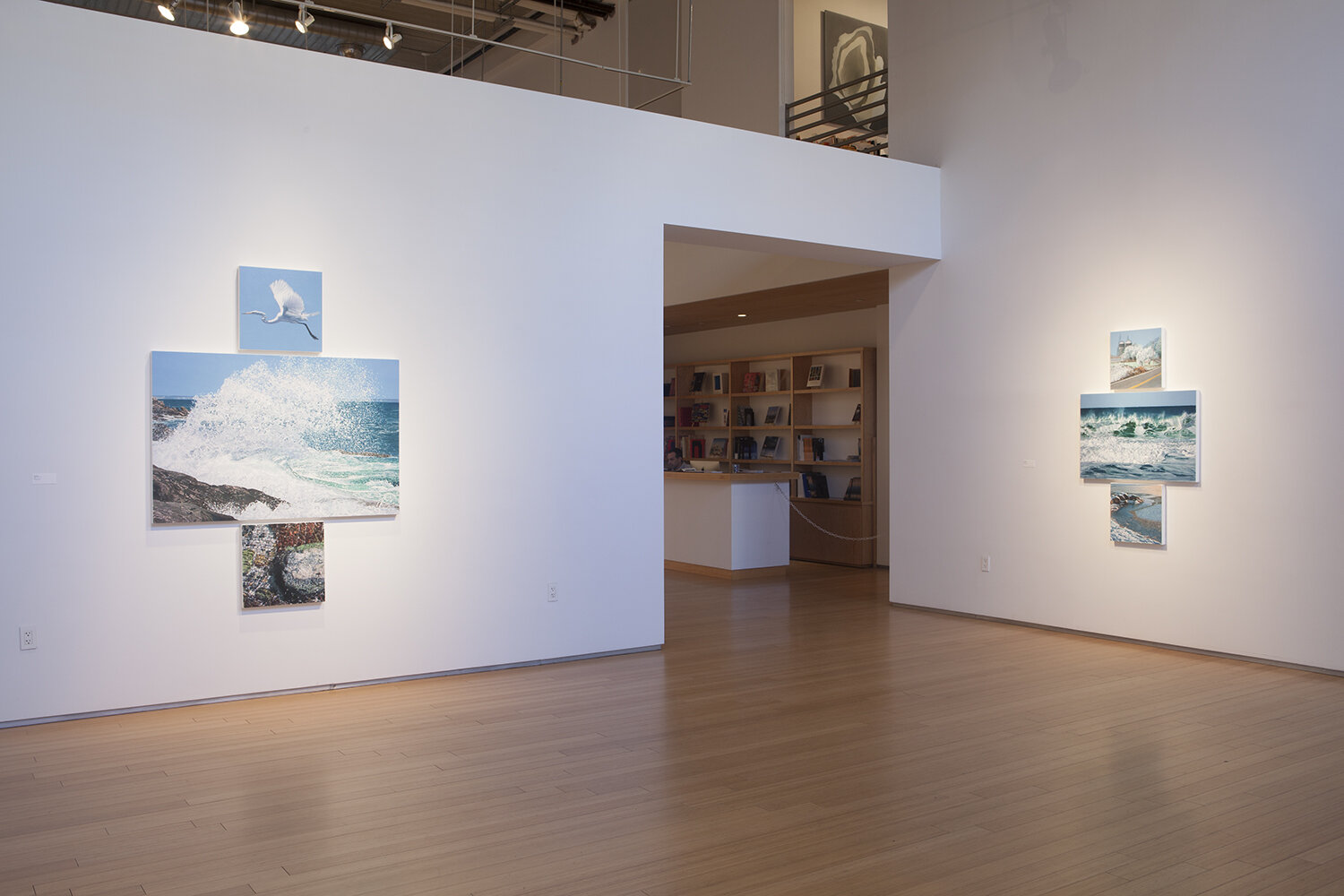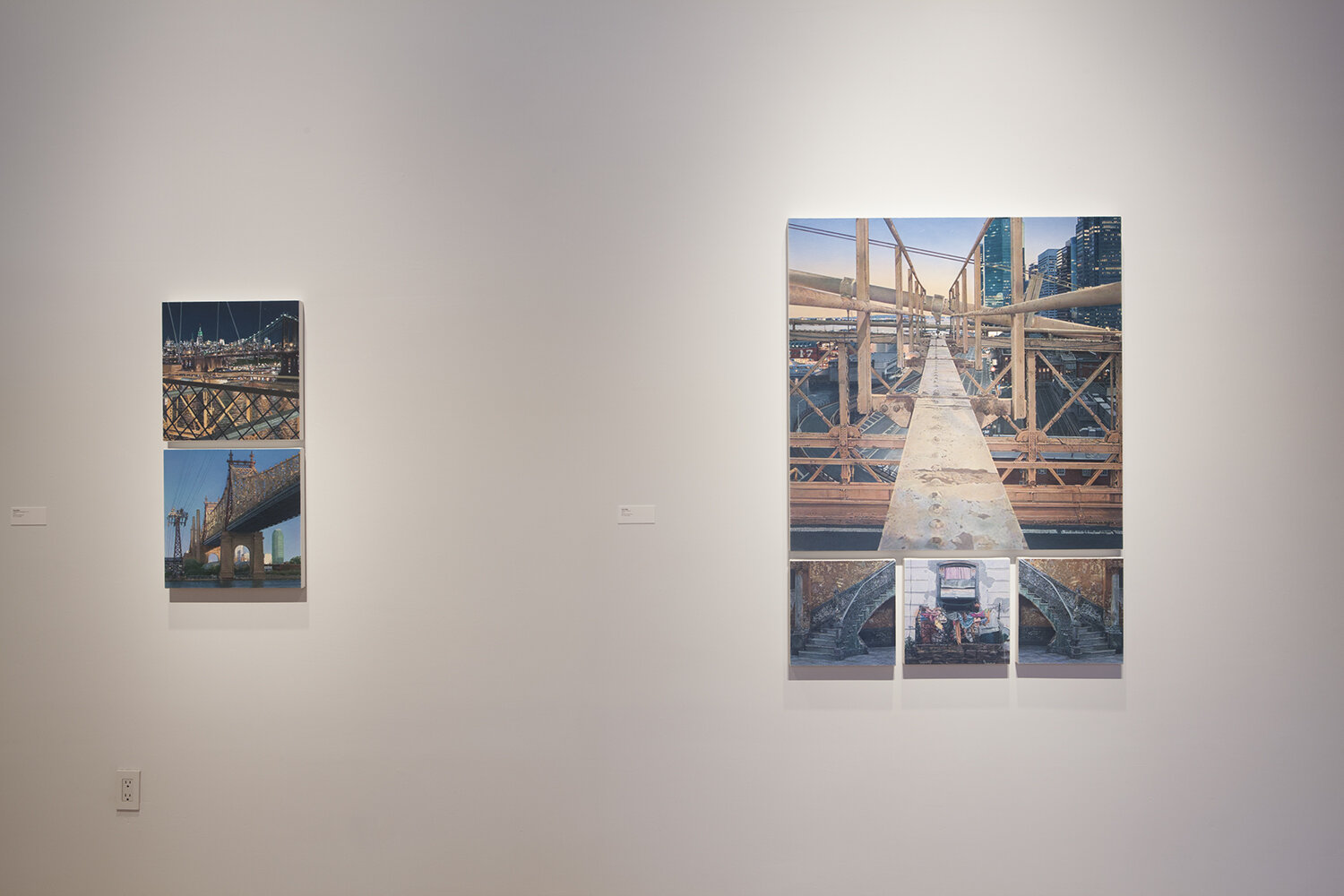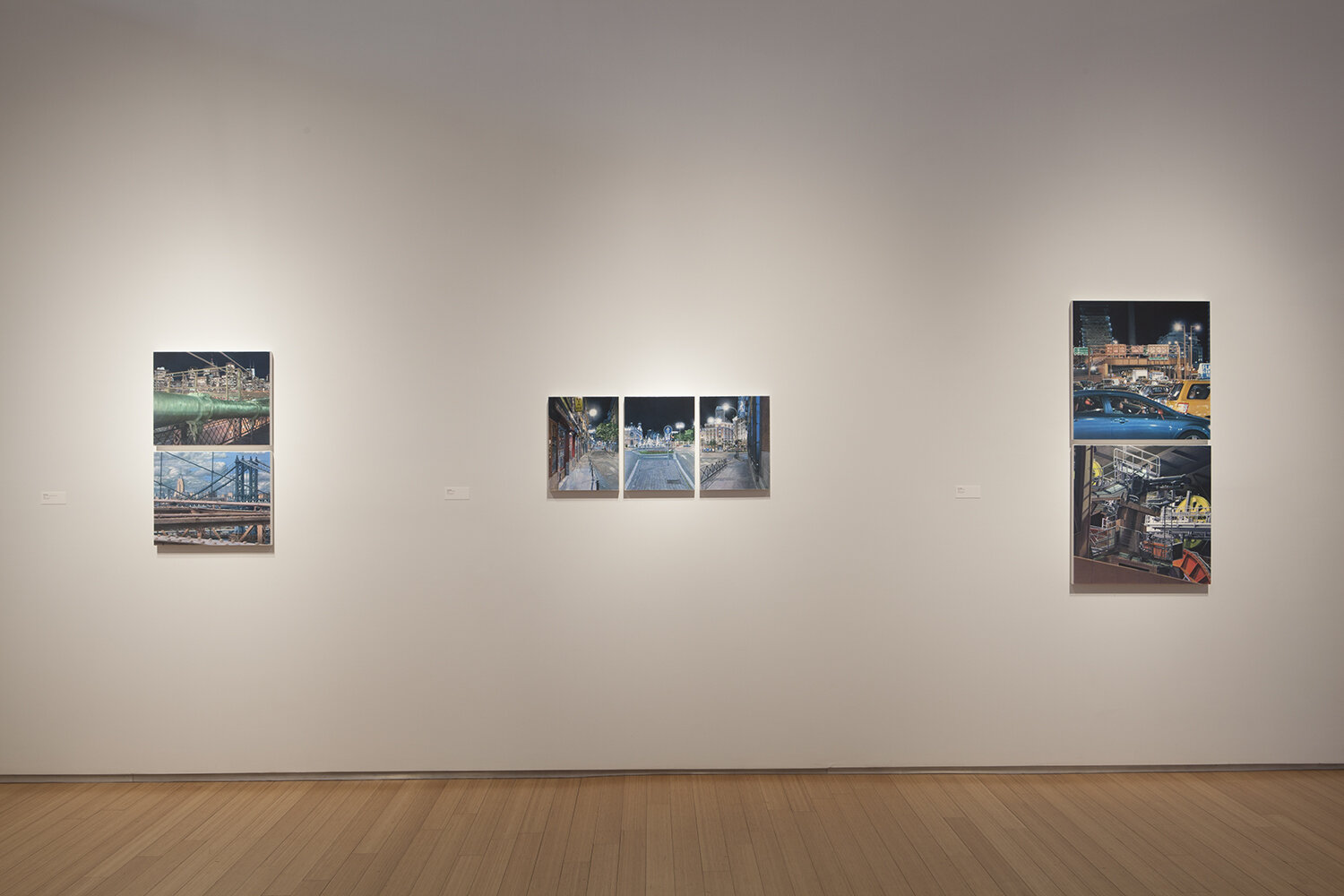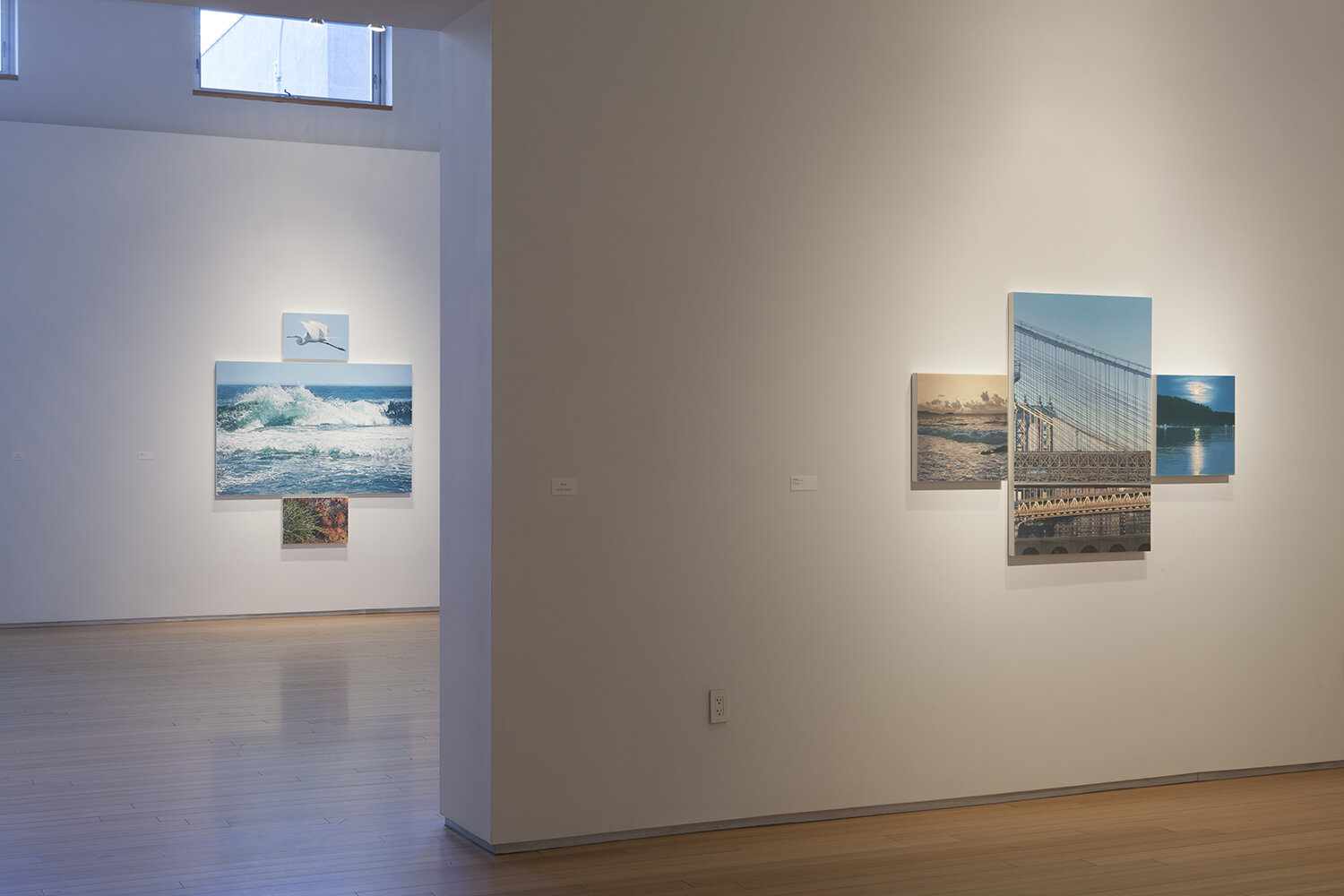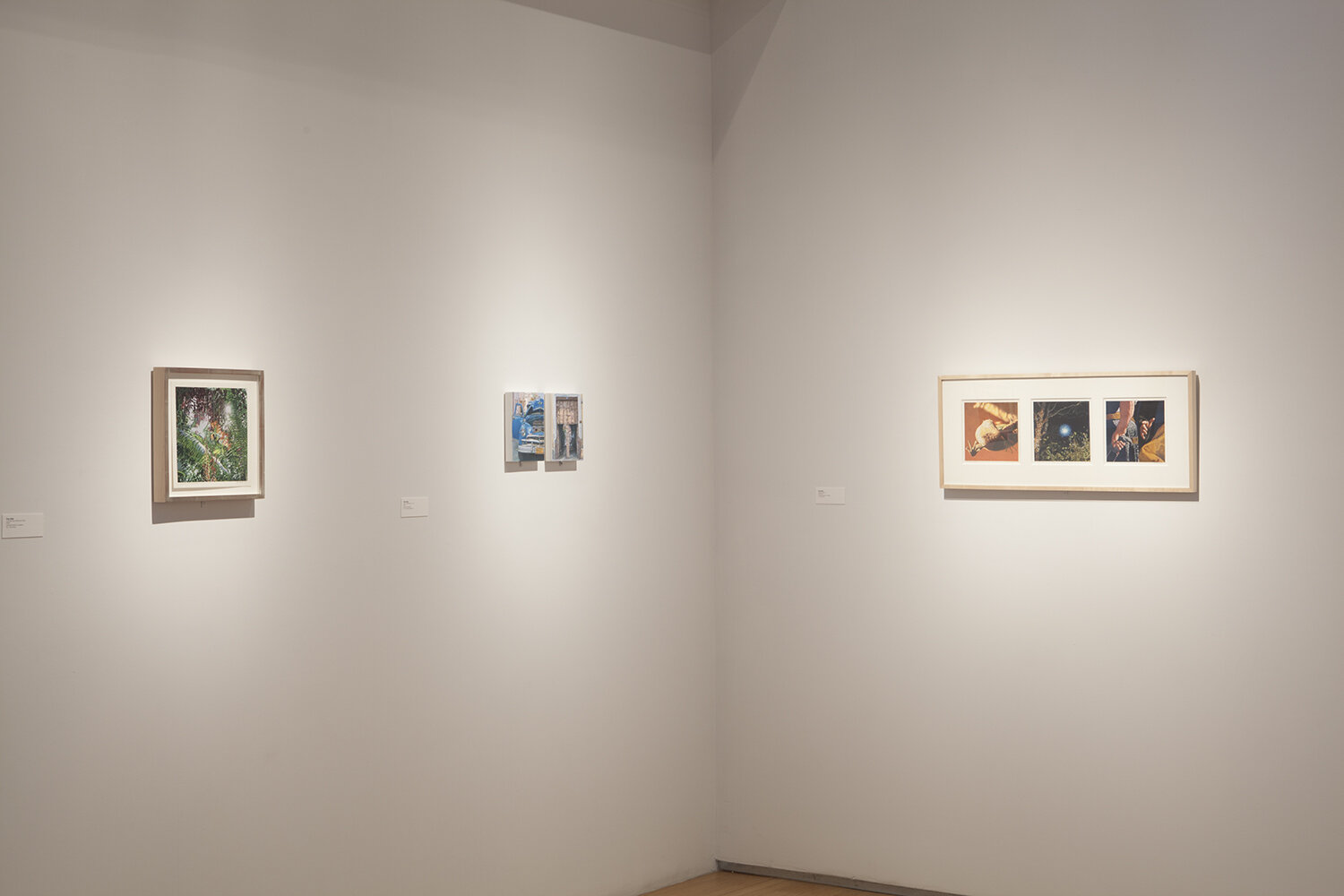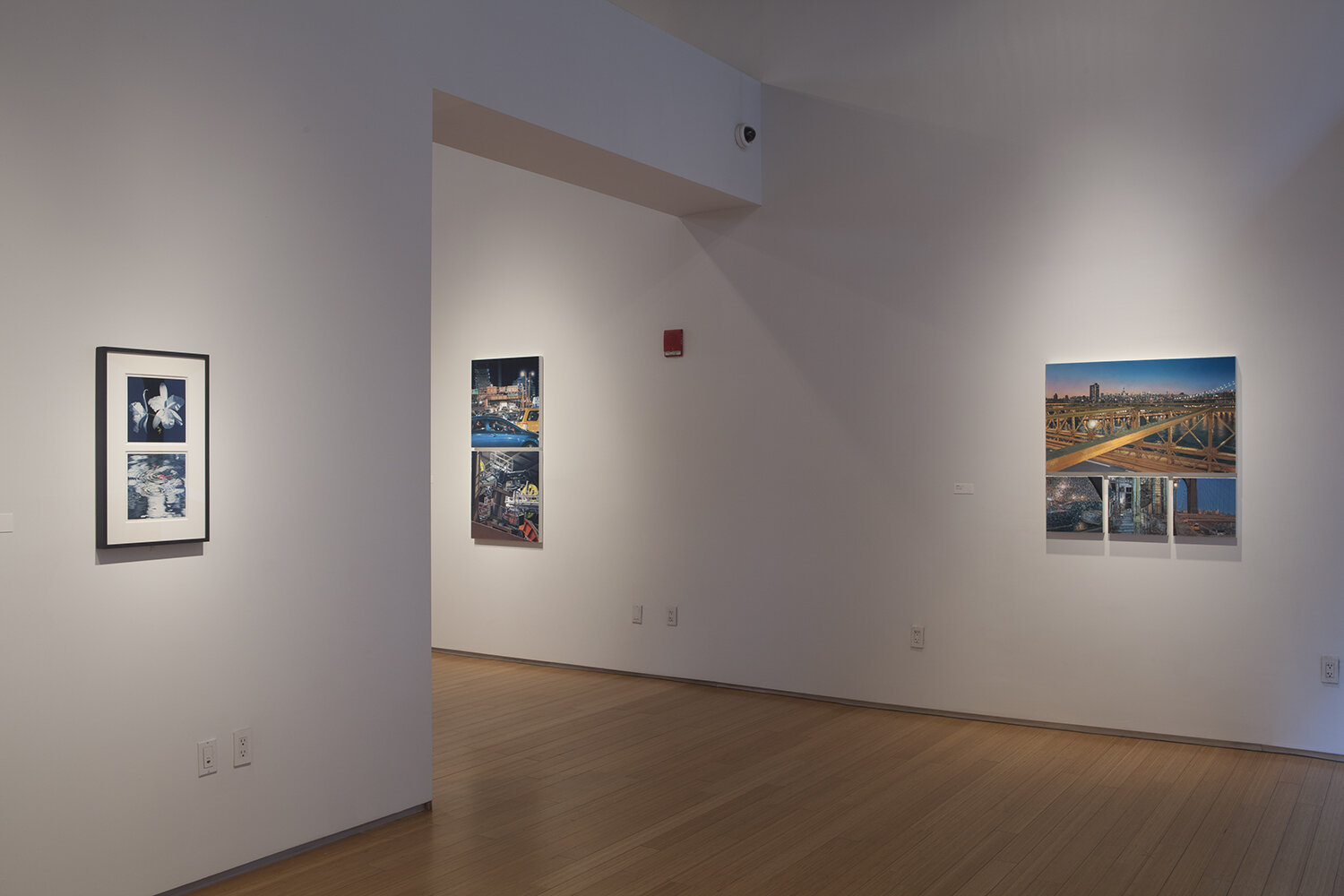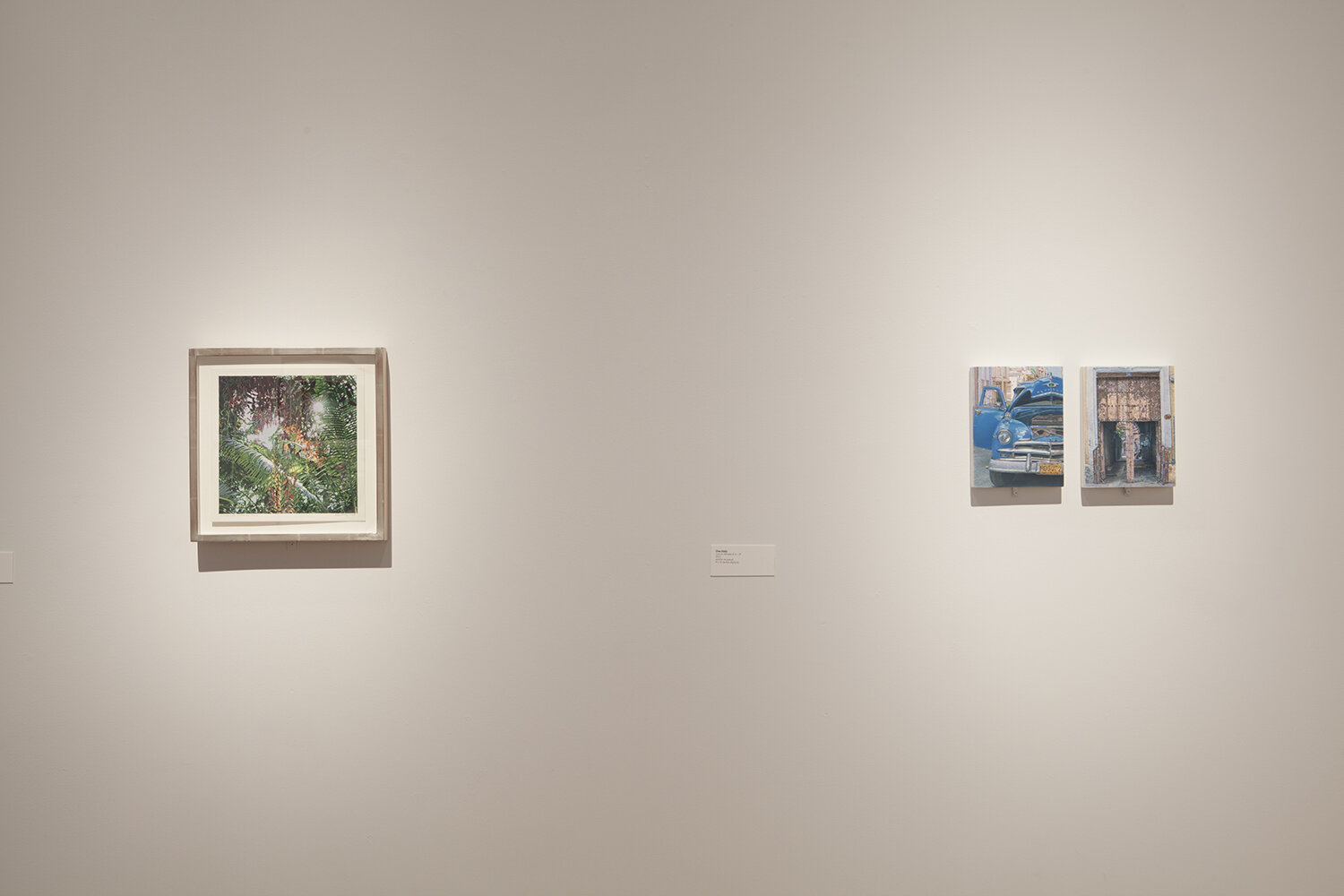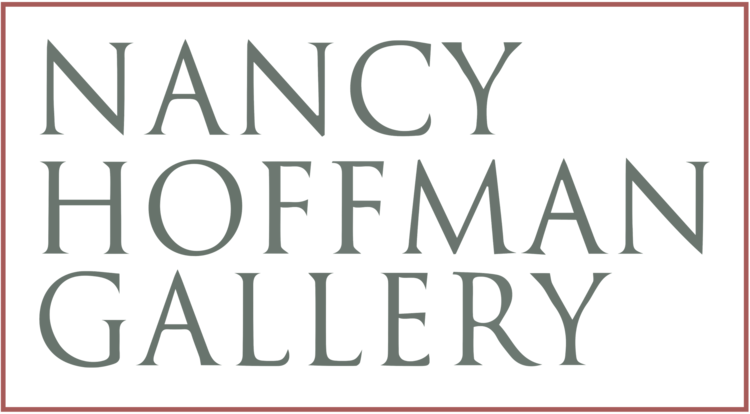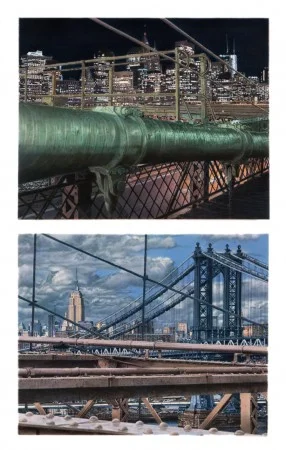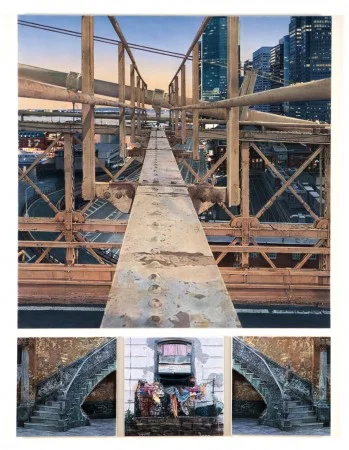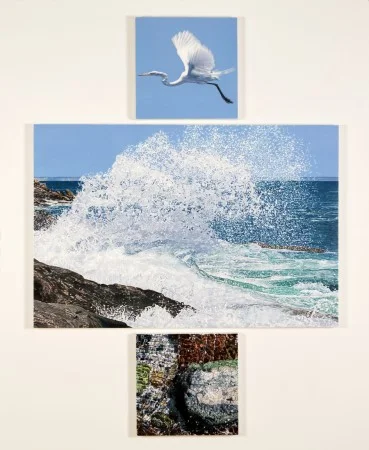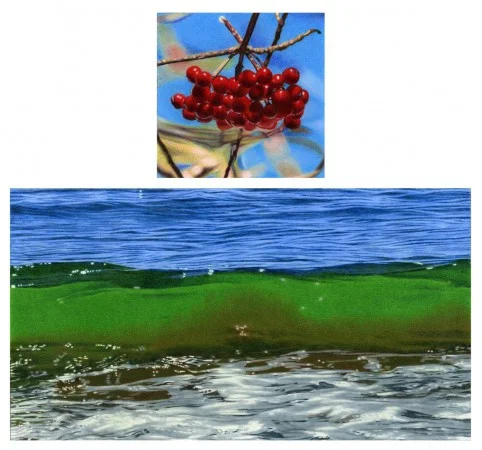Don Eddy: Two Realms
March 13, 2014 - April 26, 2014
The next exhibition at Nancy Hoffman Gallery, “Two Realms” includes paintings and drawings by Don Eddy, created over the last three years. “Two Realms” opens on March 13th and continues through April 26th.
Among the first generation of realist painters, Eddy is one of the few who has taken his vision and unique painting process into new subject matter, continuing his exploration of the mysteries of life. In the ‘70s Eddy painted the urban landscape, the California urban landscape, focusing on cars, reflections on the sides of cars, bumpers, headlights. For the past several years he has returned to the imagery of the urban landscape, this time using New York as his prime subject, and for the first time the bridges of Manhattan Island become the main focal point. In juxtaposition to the urban realm is that of nature, depicted in triptych paintings entitled “A Flight in Summer” and “A Flight in Winter,” anchored by images of waves/splashing water in the central panel with complementary seasonal images top and bottom, haikus for contemplation.
Painted in 20-30 layers of transparent acrylic over an underpainting of three colors, (the first being tiny circles about a 20th of an inch in diameter of phthalocyanine green) Eddy’s new multi-panel works are “saturated“ in palette and in subject. More complex and more concentrated than his earlier works, the recent paintings offer the viewer much to experience and savor slowly.
New York, or the bridges of “the City” figure as a locus of several paintings. In “A Thousand Sleepless Nights III,” New York is viewed from a-high, the cityscape becomes rooftops, skyscrapers with myriad windows filled with lights that suggest human presence and activity; cars and trucks beneath the structure of the bridge crawl through the city streets at rush hour as the sun sets pink over the harbor. A contemporary vista, “Sleepless Nights” calls to mind acute foreshortening in paintings throughout art history, as well as artists of the WPA who glorified works underway during another period of change. The guts of the bridge contrast to the twinkling building lights and the pink sky. The sky is important as “character” and balance, as it transitions from pale pink to perfect peaceful blue, a magical backdrop for the intensity that is New York.
In “A Flight in Summer” and “A Flight in Winter,” light is the primary “subject.” Light sparkles on waves of water, it illuminates summer bubbling spray, a different color from cold winter seas, it turns ice-encrusted grasses into jewels, it bathes the peak of a snow- filled mountain. Eddy has “upped the ante” in his depiction of light in his seasonal triptychs, which take on a spiritual quality, nature at its purest. A bird in flight in each of the paintings seems symbolic of the human spirit as it soars above the earth, free, unencumbered by what lies below.
Eddy writes of his multi-panel paintings:
“The inevitable subject of a multi-paneled painting is not ‘things’ but ‘relationships.’ In such a work, a conversation is generated among images that is more like our experience than our perception. It is not necessarily a didactic conversation with a preconceived meaning. Rather, meaning is generated in the context of a dynamic encounter among the multiple images and the observer. Existentially, no meaning preexists the dialogue. As in our life, meaning is generated in time, and in active encounters in time, that generate our experience and meaning. That is what my current work hopes to do.”
Also in the exhibition are several colored pencil drawings; each rich, dense and built up over months in layers of pigment. In the works on paper, Eddy zeroes in on aspects of nature, each a poetic evocation. “Only by Light” is a small diptych filled with sunlight; a summer wave is topped by a ripe, red bunch of berries on a branch, viewed against a blue summer sky, the duet a tone poem for a season. “Only by Light” is the bright side of life and the season; “Only by Night,” a triptych drawing, represents the mysteries of night, moonlight, and icy seasons; three enigmatic images draw the viewer in like a magnet, as the moon in the center panel casts its quiet glow in the night sky.
Don Eddy was born in Long Beach, California in 1944. He received a B.F.A. in 1967 and an M.F.A. in 1969 from the University of Hawaii. The artist attended the University of California, Santa Barbara, 1969-70, for postgraduate study.
Don Eddy’s work has been widely shown throughout this country at the Arkansas Arts Center, Little Rock; Bergstrom-Mahler Museum, Neenah, Wisconsin; Boca Raton Museum of Art, Florida; Boise Art Museum, Idaho; The Brooklyn Museum, New York; The Butler Institute of American Art, Youngstown, Ohio; Carnegie Institute, Pittsburgh; The Cathedral Church of Saint John the Divine; New York; Center for the Arts, Vero Beach, Florida; The Cleveland Museum of Art, Ohio; Columbus Museum of Art, Ohio; Contemporary Arts Center, New Orleans; The Contemporary Museum, Honolulu; Danforth Museum of Art, Framingham, Massachusetts, Duke University Museum of Art, Durham, North Carolina; Flint Institute of Arts, Michigan; Greenville County Museum of Art, South Carolina; Heckscher Museum, Huntington, New York; The Huntington Museum of Art, West Virginia; Indianapolis Museum of Art, Indiana; Mana Art Center, Jersey City, New Jersey; Museum of Art, Fort Lauderdale; The Museum of Modern Art, New York; Nassau County Museum of Art, Roslyn Harbor, New York; The Oakland Museum, California; Oklahoma Art Center, Oklahoma City; Oklahoma City Museum of Art, Oklahoma; Orlando Museum of Art, Florida; Pennsylvania Academy of the Fine Arts, Philadelphia; The Philbrook Museum of Art, Tulsa, Oklahoma; Polk Museum of Art, Lakeland, Florida; San Antonio Museum of Art, Texas; San Francisco Museum of Modern Art, California; Tampa Museum of Art, Florida; Tucson Museum of Art, Arizona; Virginia Beach Center for the Arts, Virginia; Virginia Museum of Fine Arts, Richmond; Whitney Museum of American Art, New York; Wichita Art Museum, Kansas; Jane Voorhees Zimmerli Art Museum at Rutgers, University, New Brunswick, New Jersey; among others, and abroad at Aarhus Kunst Museum, Denmark; Australia National Gallery, Canberra; Birmingham Museum and Art Gallery, United Kingdom; Gl. Holtegaards, Copenhagen; Centro Mostre, Rome; Deutsche Guggenheim, Berlin; The Gulbenkian Museum, Lisbon; in Japan at City Museum of Iwaki; Hokodate Museum of Art, Hokkaido; Kumamoto Prefectural Museum of Art; and Prefectural Museum of Iwate; Kunstverein, Hannover; Kunsthalle, Nuremberg; Musée de Strasbourg: Musée d’Art Moderne et Contemporain, Strasbourg, France; Musée d’Ixelle, Belgium; El Museo
del Arte Thyssen-Bornemisza, Madrid, Spain; Museu Europeau d’Art Modern, Barcelona, Spain; National Museum in Gdansk, Poland; and Salas de Exposiciones de Bellas Artes, Madrid.
The artist’s work is represented in the collections of Akron Art Museum, Ohio; Boise
Art Museum, Idaho; The Butler Institute of American Art, Youngstown, Ohio; The Cleveland Museum of Art, Ohio; The Contemporary Museum, Honolulu; Danforth Museum of Art, Framingham, Massachusetts; Evansville Museum of Arts, History & Science, Indiana; Flint Institute of Arts, Michigan; Fogg Art Museum, Harvard University, Cambridge, Massachusetts; Haggin Museum, Stockton, California; Harvard University, Massachusetts; Fort Wayne Museum of Art, Indiana; Hofstra University Museum, Hempstead, New York; Honolulu Academy of Arts, Hawaii; The Metropolitan Museum of Art, New York; Mississippi Museum of Art, Jackson; The Museum of Modern Art, New York; Oklahoma City Museum of Art, Oklahoma; Rhode Island School of Design Museum of Art, Providence; Saint Louis Art Museum, Missouri; San Antonio Museum of Art, Texas; Santa Barbara Museum of Art, California; Sheldon Museum of Art, University of Nebraska, Lincoln; Solomon R. Guggenheim Museum, New York; Speed Art Museum, Louisville, Kentucky; Springfield Art Museum, Missouri; Storm King Art Center, Mountainville, New York; The Toledo Museum of Art, Ohio; University Museum of Contemporary Art, University of Massachusetts, Amherst; Whitney Museum of American Art, New York; among others, and in collections abroad: Israel Museum; Jerusalem; Musée D’Art Moderne de Saint-Etienne Métropole, St. Etienne, France, Museo de Arte Moderno, Bogota; Neue Galerie, Aachen, Germany; Utrecht Museum, The Netherlands.
The book Don Eddy, The Art of Paradox, written by Donald Kuspit and published by Hudson Hills Press, New York, is available through the gallery.
Don Eddy resides in New York.
For further information and/or photographs please call 212-966-6676 or e-mail Nancy Hoffman Gallery at info@nancyhoffmangallery.com
Yours sincerely,
Nancy Hoffman
